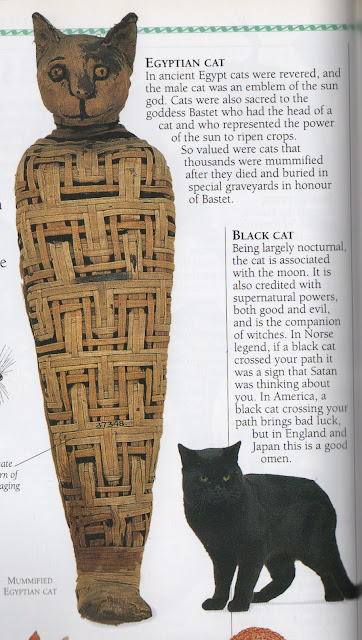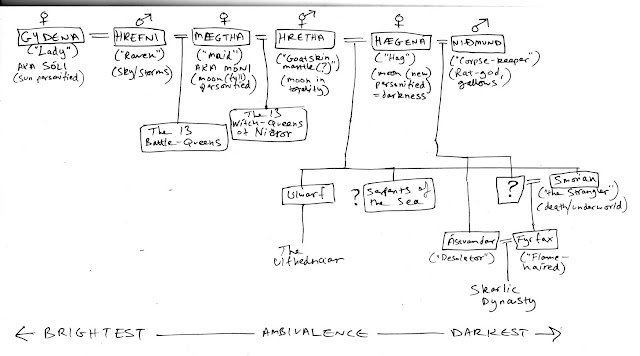Thoughts on Feline Divinities and Matriarchy in the Poetic Text

While I currently have about 80,000 words writen of the epic poem component of this project - what is in effect 'The Gyldland Saga' itself (though still a working title) - and most of the writing still to be done is linking material (followed by extensive editing), I'm certainly open to introducing new ideas, scenes, or themes if they are relevant and worthy. One such is the structure and nature of the Rockcats' divine lineage - the feline people from whom the heroine of the whole work originates. The idea was to create a heroic figure who had none of the qualities of traditional epic heroism - while wise with words and healing-craft, she is not strong, is middle-aged, overweight, non-human and non-male. She grows slowly and reluctantly into her destiny, as unlikely as it is. Her very name, 'Womba' - derived from the OE word for 'womb' - is, as various characters remind her, a misnomer, as she is past child-bearing age (which in certain systems of patri...

